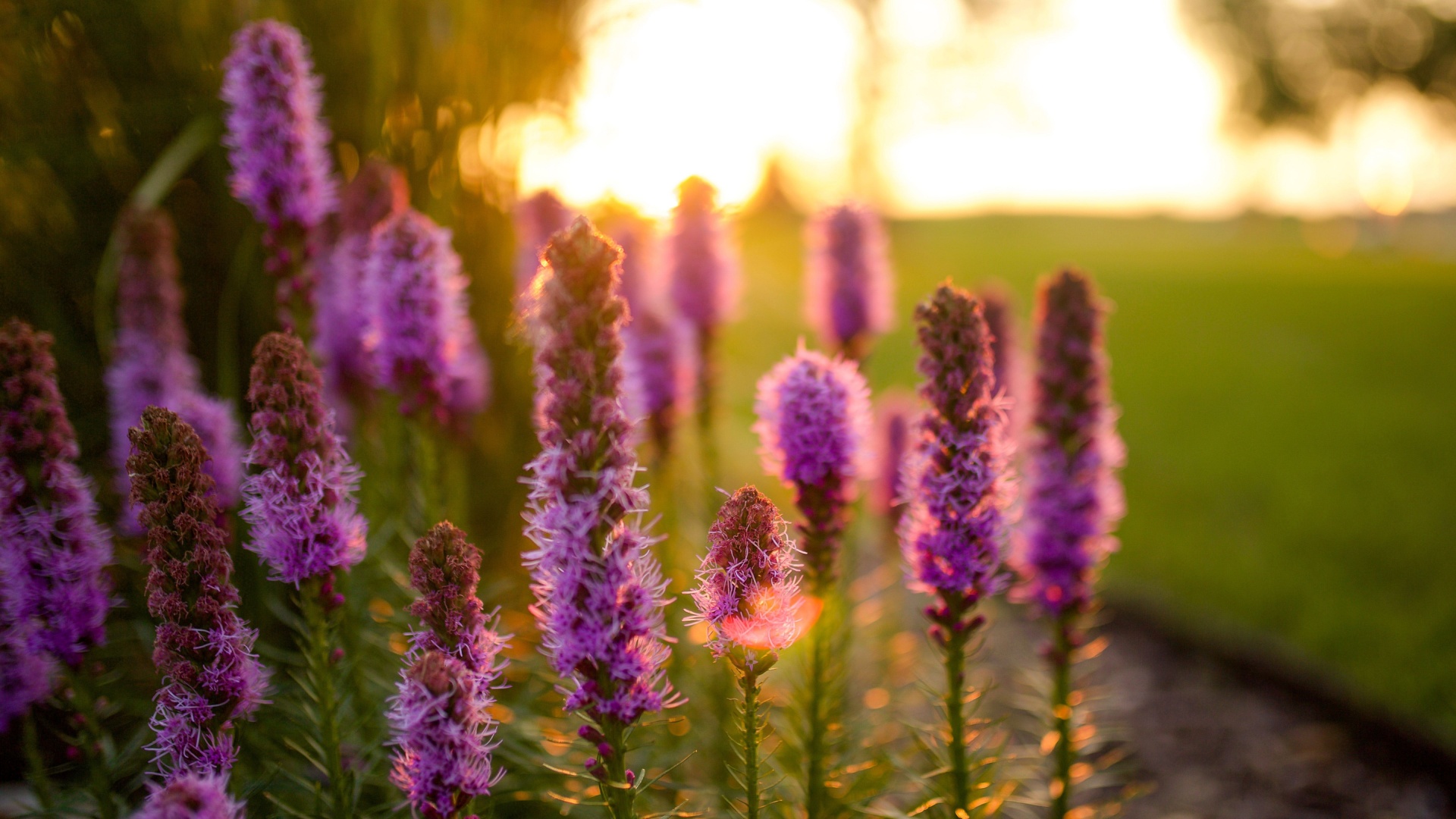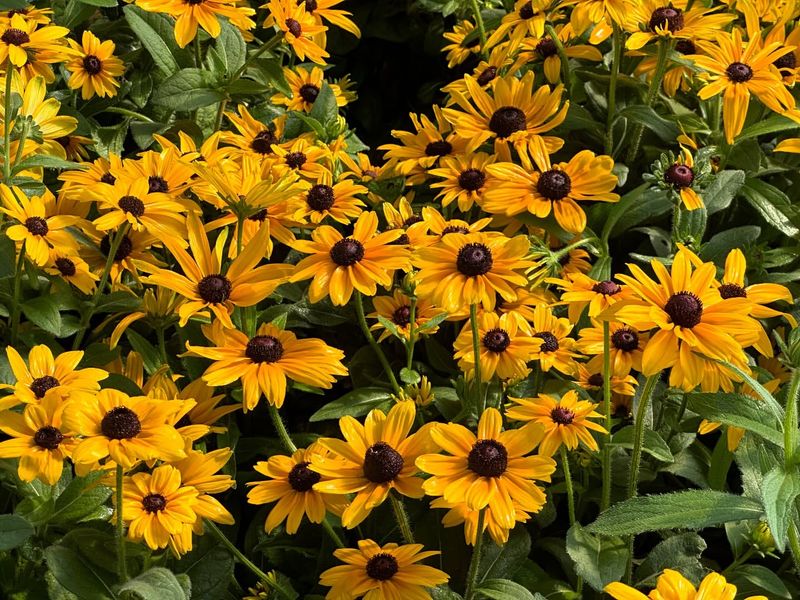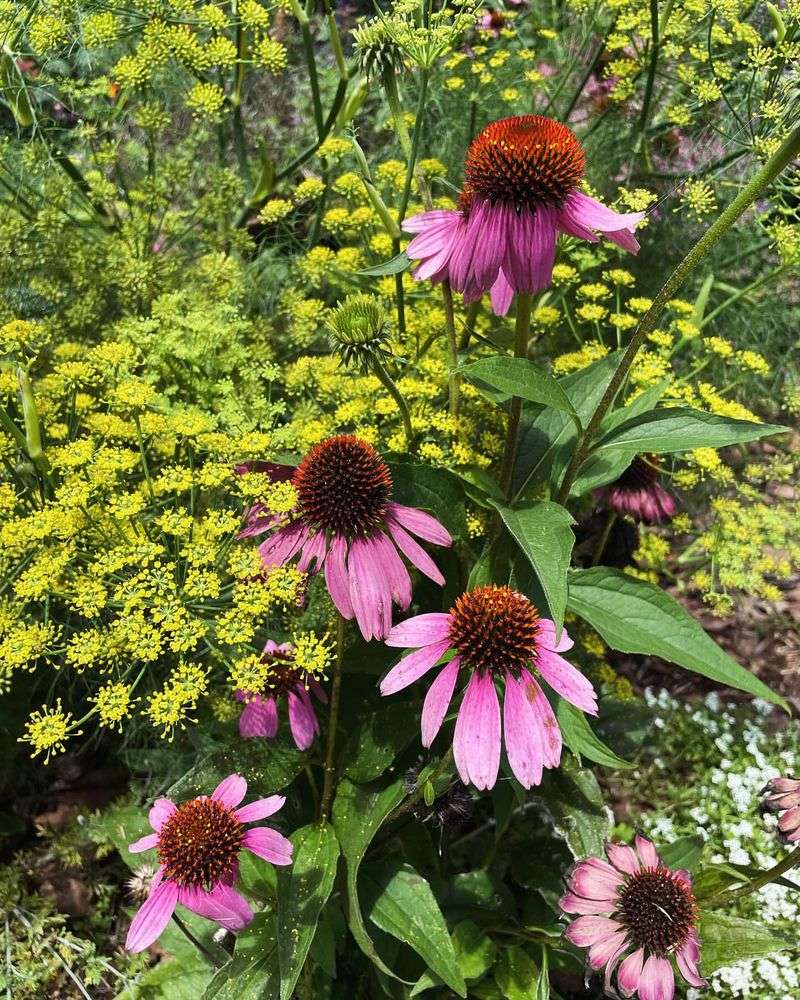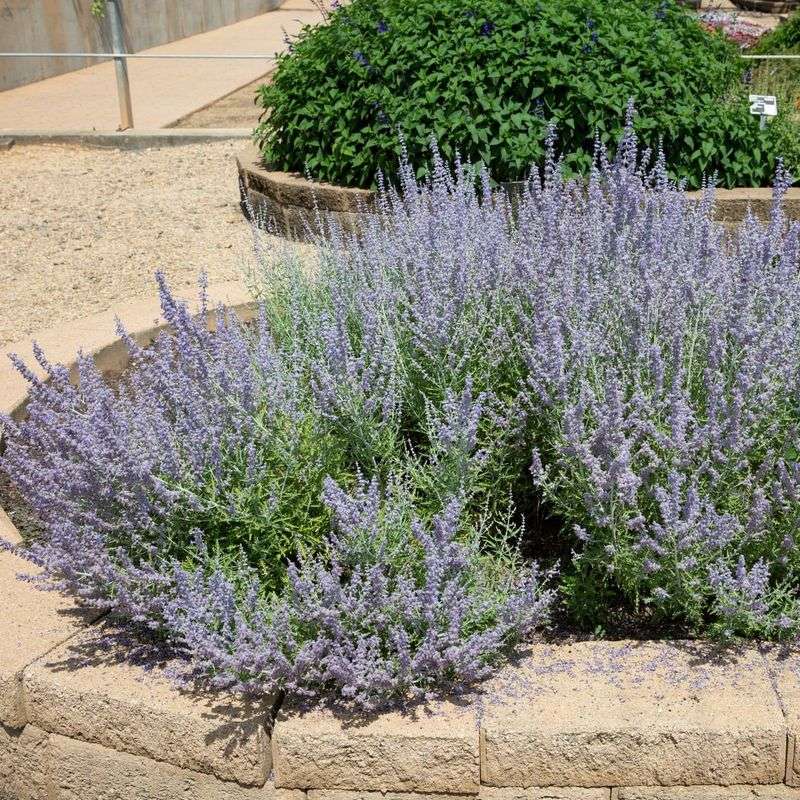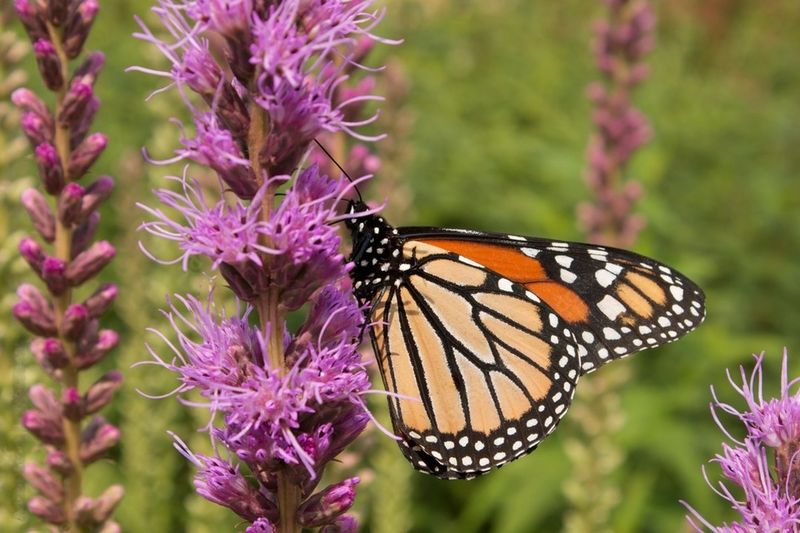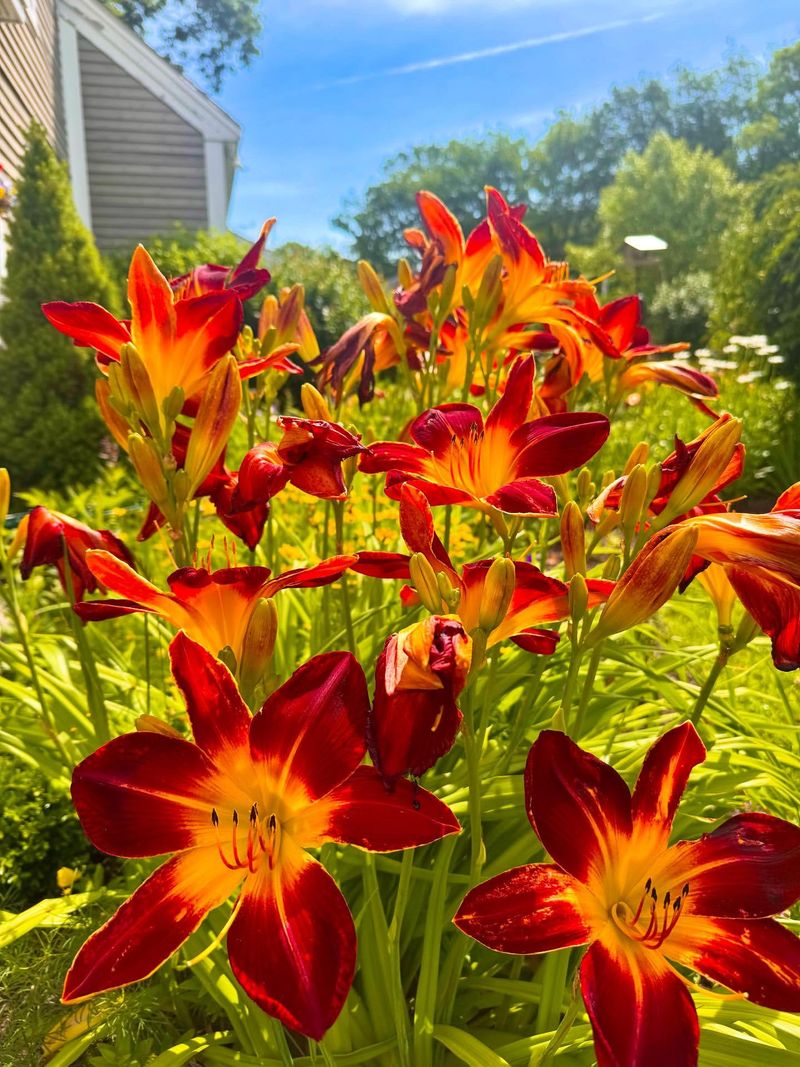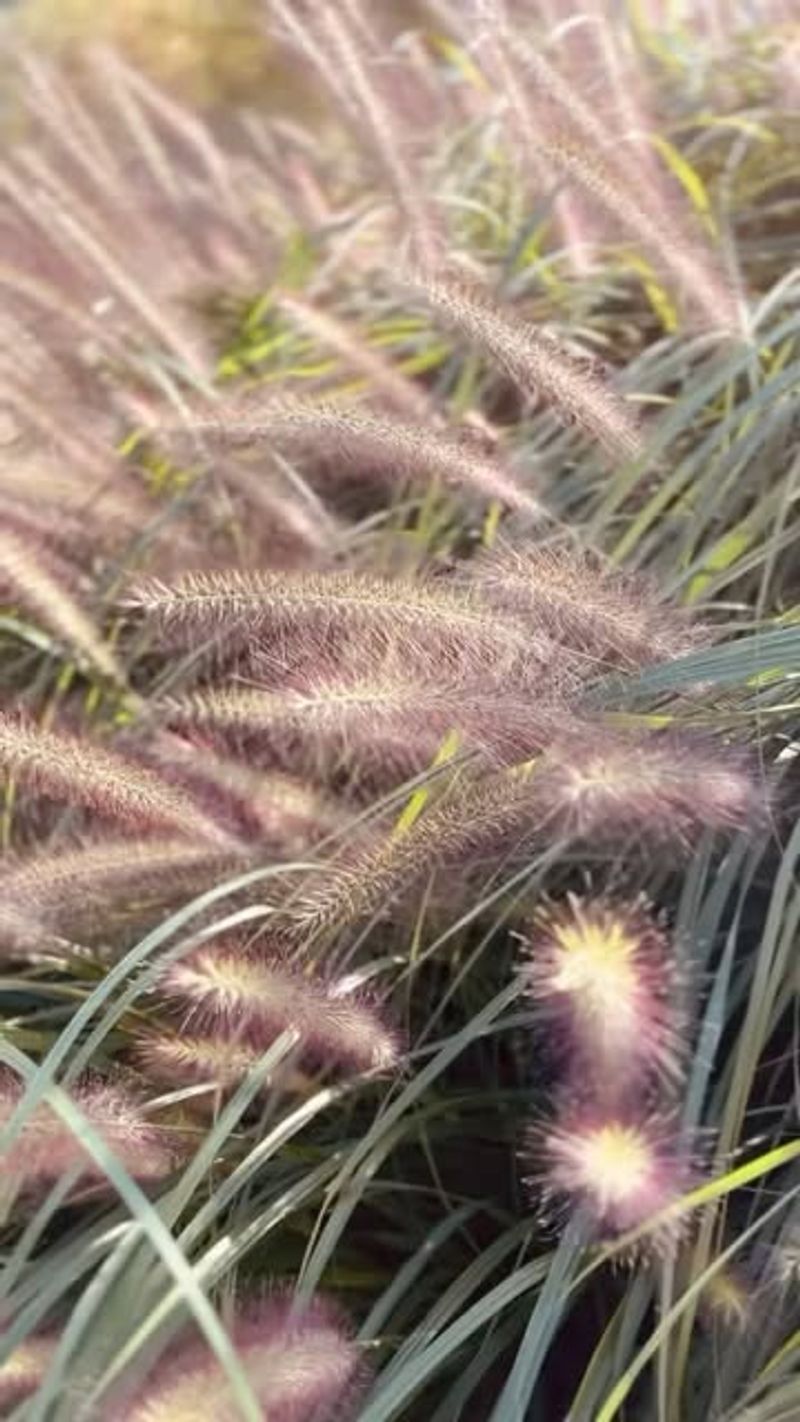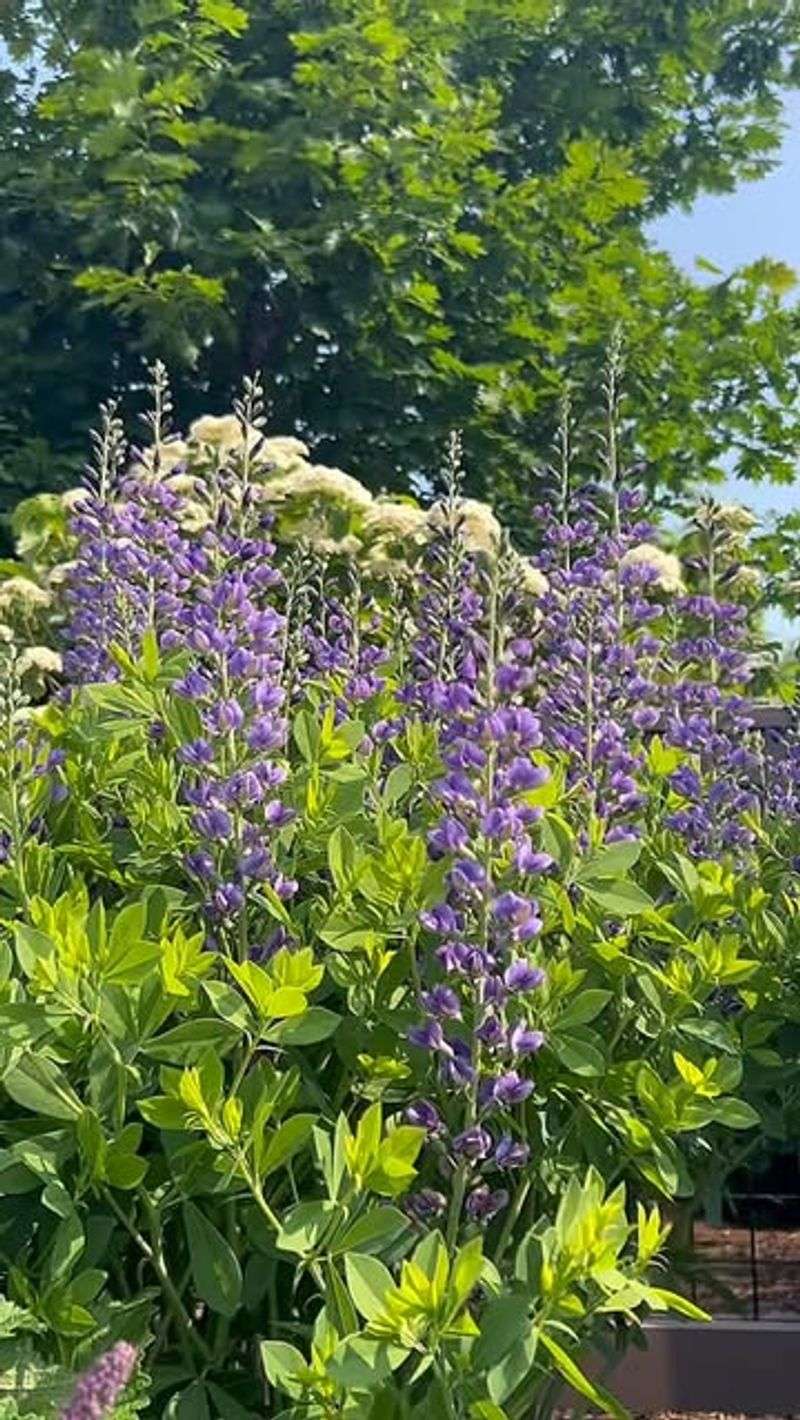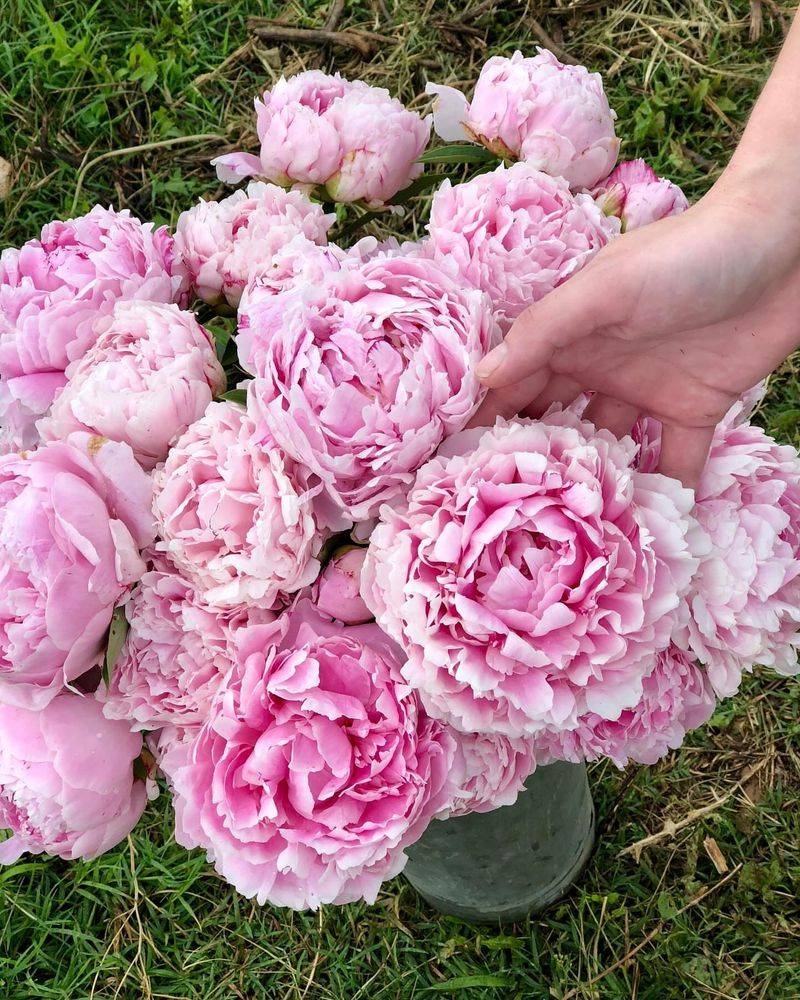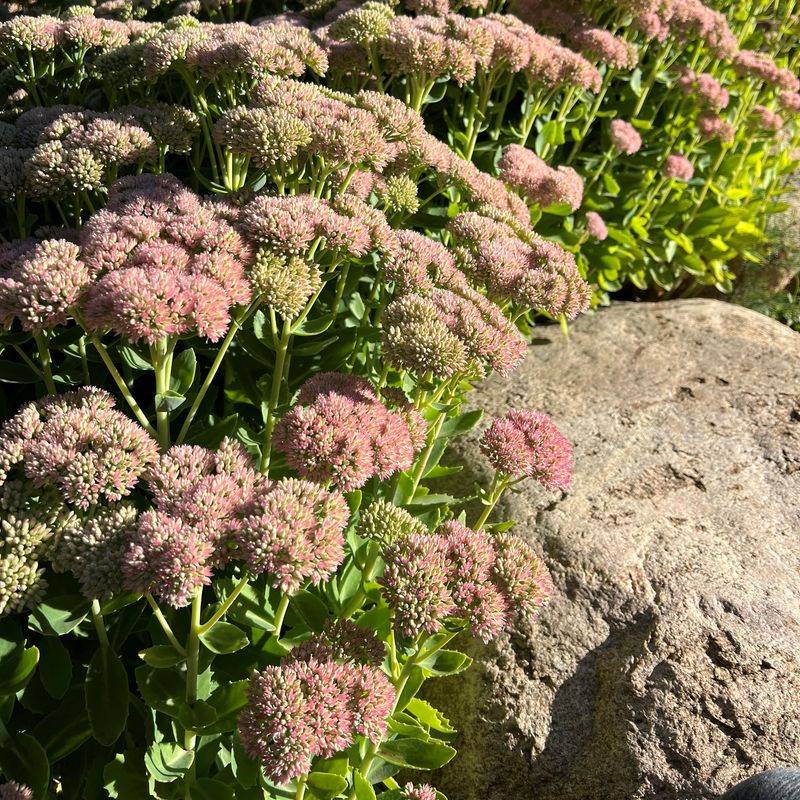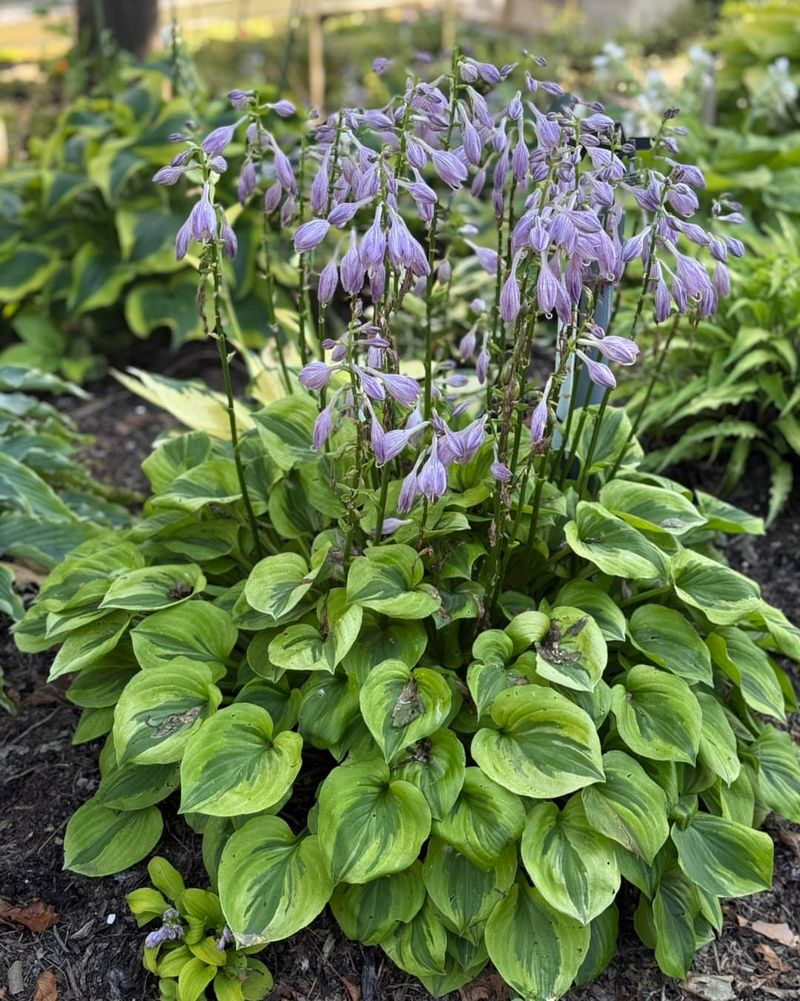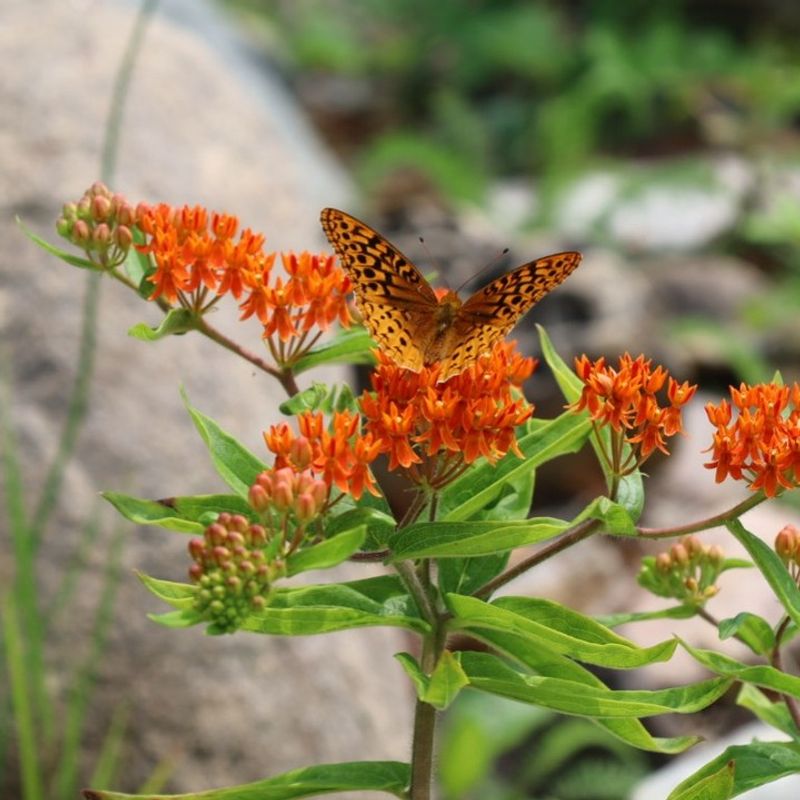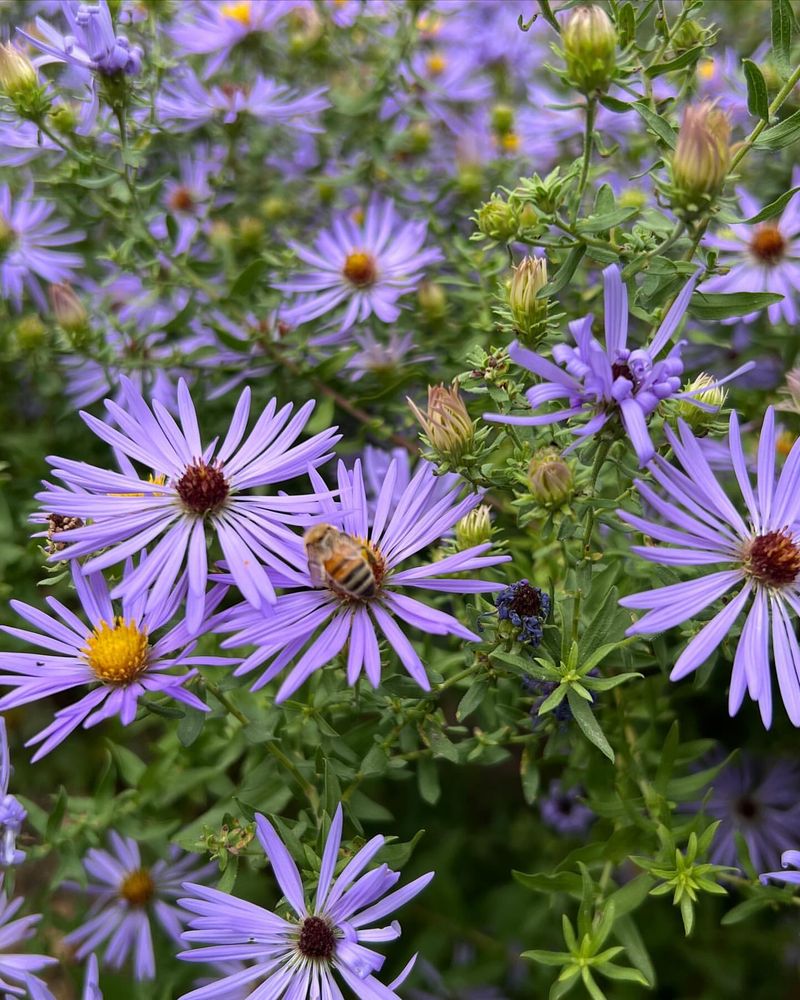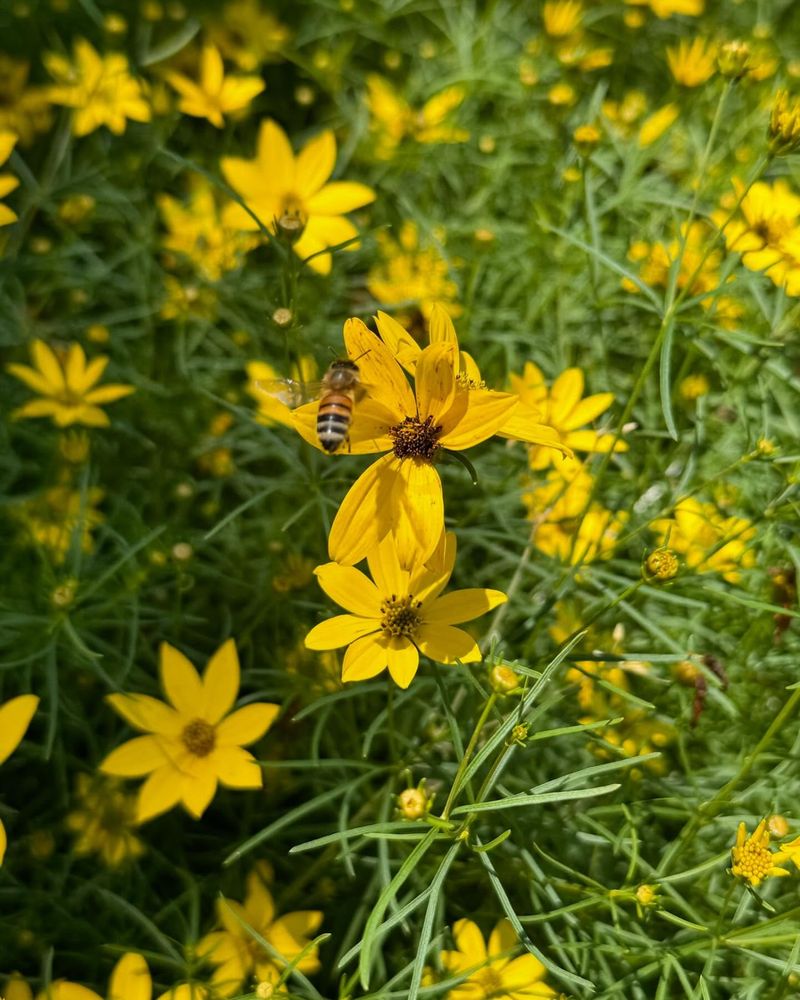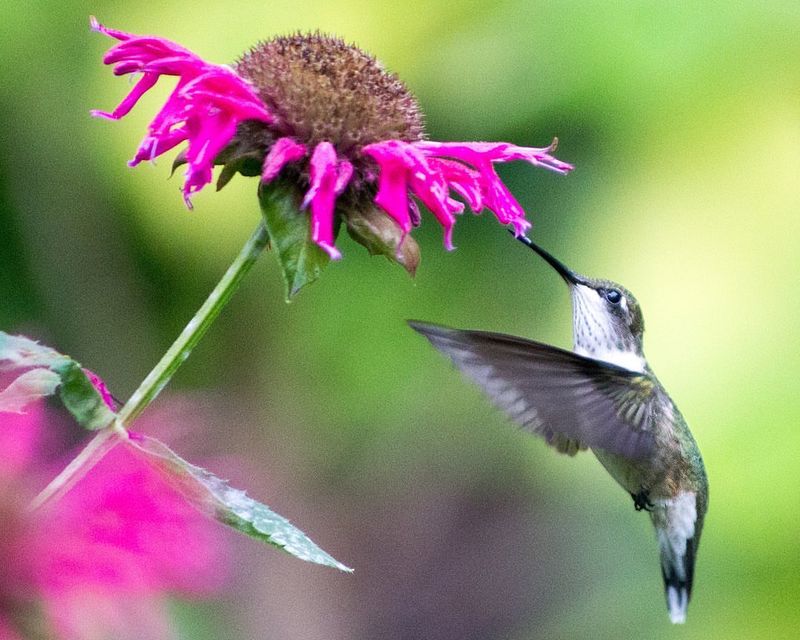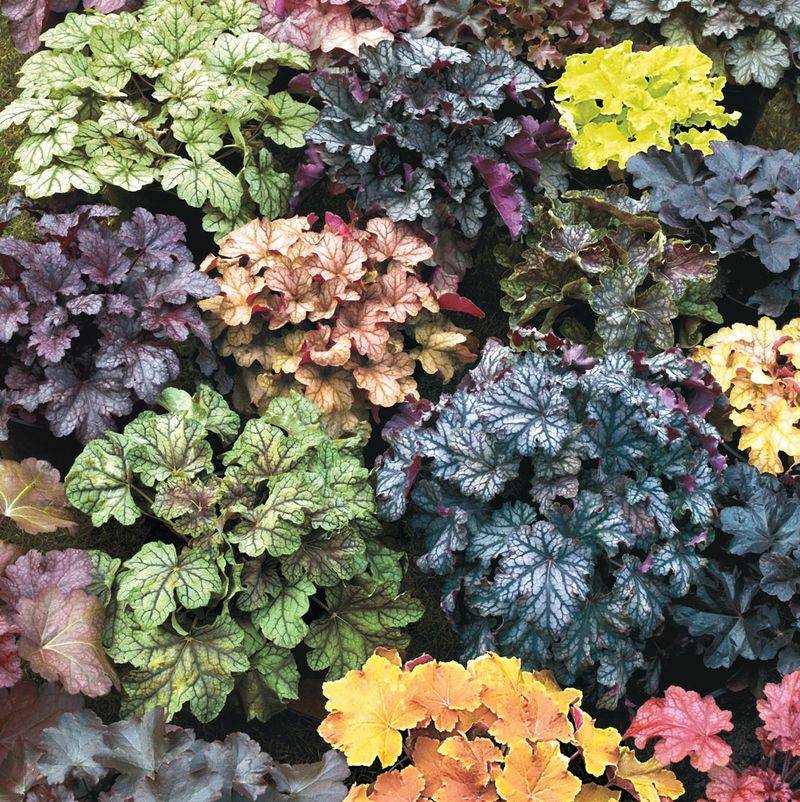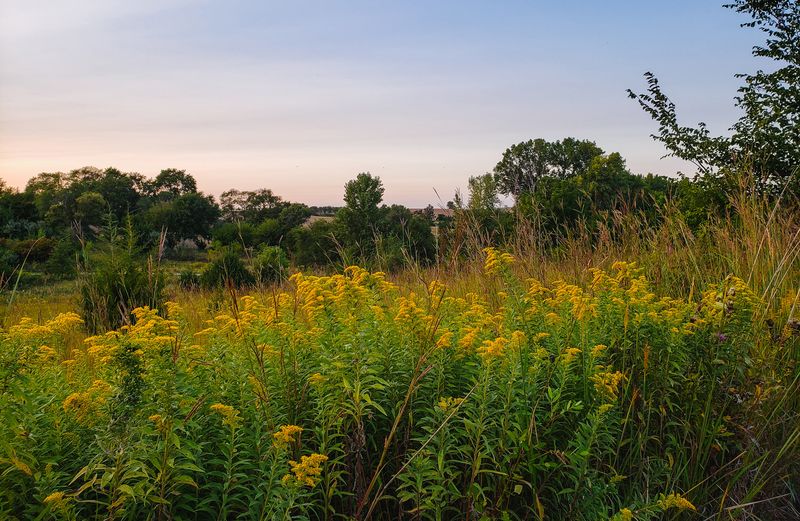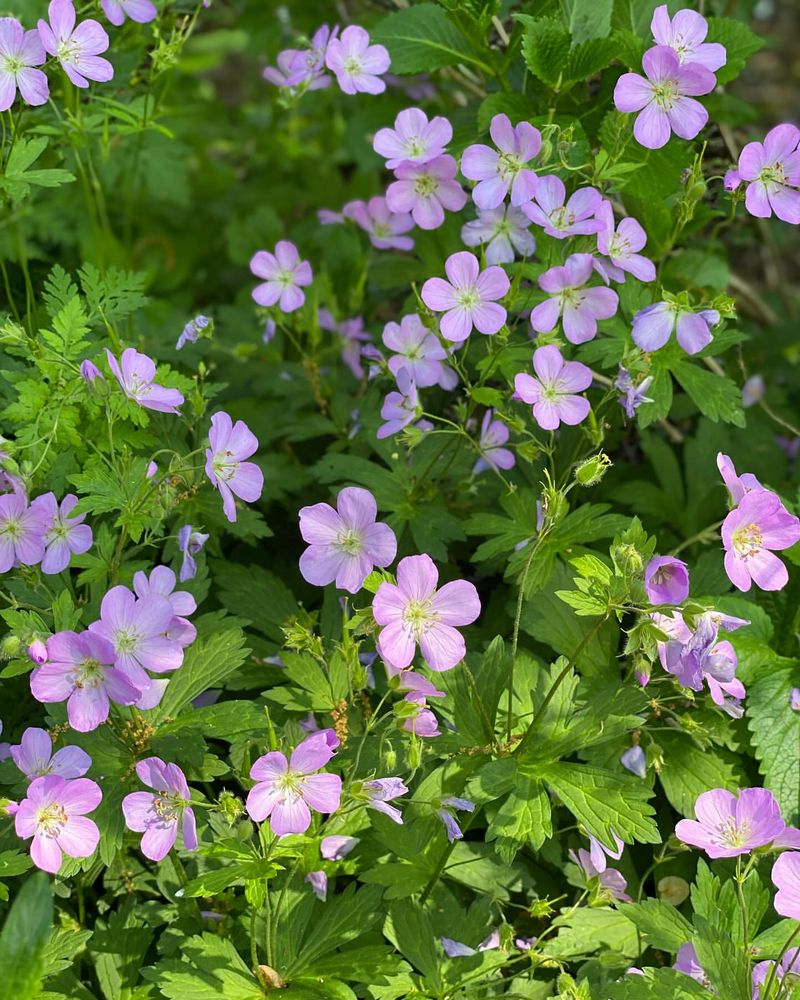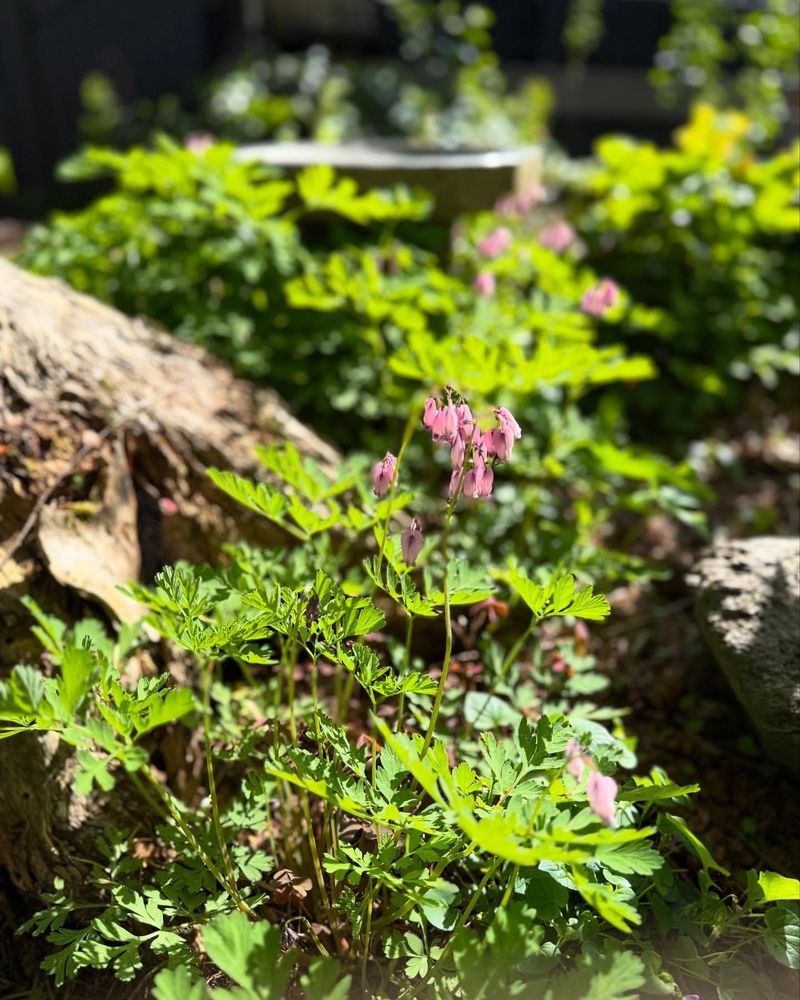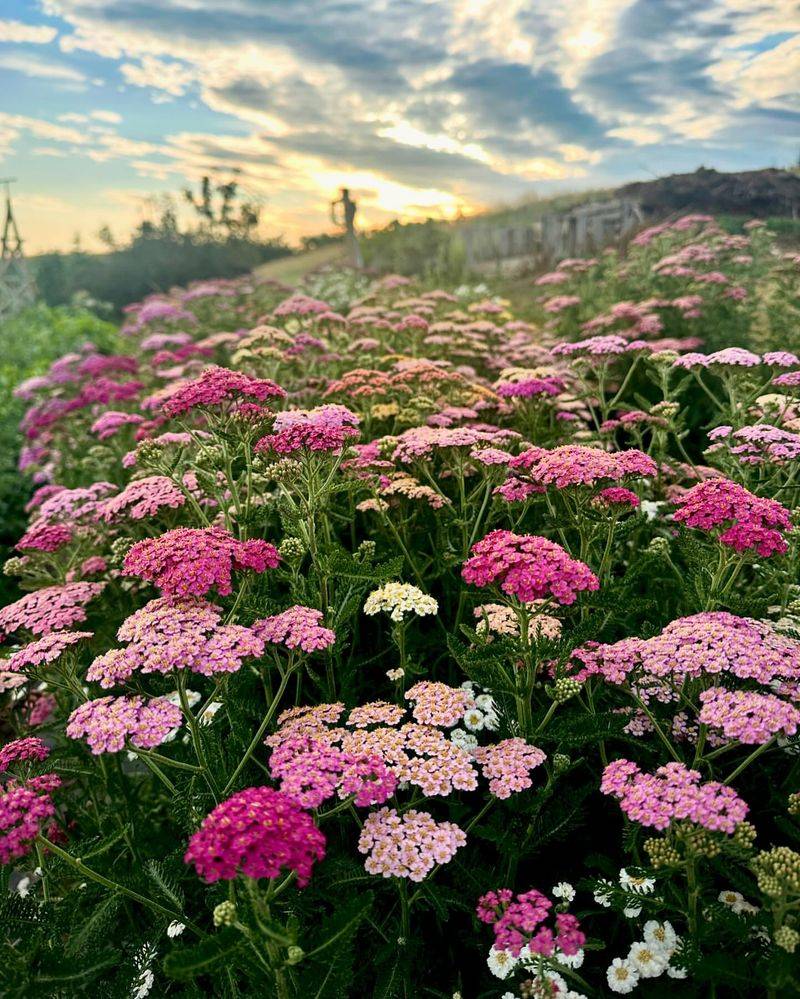Transforming your Illinois garden into a spectacular display doesn’t have to be difficult. Perennials are the backbone of any garden, returning year after year with beautiful blooms and foliage.
The right perennials can thrive in our unique Midwest climate, handling both freezing winters and hot summers while creating stunning visual impact.
1. Black-Eyed Susan: Sunshine on Stems
Bright yellow petals surround a dark center, creating a cheerful display that blooms from June through September. Native to Illinois, these sturdy flowers stand up to summer heat and winter cold without complaint.
Plant them in full sun for best results. They’ll attract butterflies and birds to your garden, especially goldfinches that love to snack on their seeds. Black-Eyed Susans spread naturally, filling empty spaces with golden blooms year after year.
2. Purple Coneflower: Tough Native Beauty
Purple petals droop gracefully from a spiky orange-brown center, creating a distinctive silhouette in any garden. Echinacea purpurea isn’t just pretty—it’s tough as nails, handling drought and poor soil with ease.
Butterflies and bees can’t resist these blooms, making your garden buzz with life from June through August. Leave the seed heads standing through winter to feed hungry birds. An added bonus: parts of this plant have been used for centuries as natural medicine.
3. Russian Sage: Silver-Blue Cloud
Airy spikes of tiny lavender-blue flowers create a misty effect above silvery foliage. Russian sage brings a magical quality to gardens from July through October, with its cloud-like appearance softening harsh lines.
Deer and rabbits leave it alone thanks to its aromatic foliage. The plant thrives in hot, sunny spots where other perennials might struggle. Pair it with yellow or orange flowers for a stunning color combination that’ll make neighbors stop and stare.
4. Blazing Star: Prairie Fireworks
Tall purple spikes shoot skyward like nature’s fireworks, blooming from the top down in a unique display. Liatris is a prairie native that feels right at home in Illinois gardens, connecting your landscape to its natural heritage.
Monarch butterflies make special trips to visit these blooms. The vertical form adds important height to garden designs, creating visual interest even in small spaces. Plant them in groups of 3-5 for the most dramatic effect in your summer garden.
5. Daylily: The Perfect Beginner’s Perennial
Trumpet-shaped blooms in sunset colors open daily throughout summer, giving these plants their fitting name. Each flower lasts just one day, but plants produce so many buds that the show continues for weeks.
Virtually indestructible, daylilies thrive in almost any condition from full sun to partial shade. They multiply year after year, letting you divide and spread the beauty throughout your garden. Modern varieties come in colors from near-white to almost black, with ruffled, doubled, or spider-form flowers.
6. Ornamental Grasses: Year-Round Drama
Graceful plumes dance in autumn breezes, catching morning light and creating garden magic. Varieties like Switchgrass, Little Bluestem, and Feather Reed Grass bring movement and sound to Illinois landscapes.
Winter interest is their secret superpower. While other perennials disappear underground, ornamental grasses stand tall through snow, creating stunning silhouettes. Birds appreciate the seeds and shelter during cold months. Cut them back in early spring before new growth emerges.
7. Baptisia: Blue False Indigo
Lupine-like blue flower spikes emerge in spring, followed by interesting seed pods that rattle in fall breezes. This prairie native develops a shrub-like presence, growing 3-4 feet tall and equally wide when mature.
Deep roots make Baptisia drought-resistant once established. The blue-green foliage stays attractive all season, even after flowers fade. Modern hybrids offer yellow, white, or purple blooms if blue isn’t your color. Plant where it can stay put—it resents being moved once established.
8. Peonies: Heirloom Elegance
Massive fragrant blooms have made peonies garden favorites for generations. Some plants live for 100+ years, becoming family heirlooms passed down through decades.
May and June bring softball-sized flowers in shades from pure white to deepest burgundy. Plant peonies in fall, making sure not to bury the growing eyes too deeply. Ants on the buds are normal—they’re just enjoying the sweet nectar and won’t harm the flowers.
9. Sedum ‘Autumn Joy’: Fall’s Last Hurrah
Broccoli-like buds transform into flat-topped pink flowers that deepen to rusty red as autumn progresses. The succulent foliage stays attractive all season, with blue-green leaves forming neat mounds before the late-summer bloom show.
Bees and butterflies flock to these flowers during a time when nectar sources become scarce. Drought-tolerant and practically maintenance-free, Sedum thrives in poor soil where other plants struggle. Leave the dried flower heads standing for winter interest and bird food.
10. Hosta: Shade Garden Champion
Lush leaves in shades from blue to gold create texture in shady spots where few flowering plants thrive. Hostas range from tiny 6-inch mounds to massive 4-foot specimens, with hundreds of varieties to choose from.
Lavender or white lily-like flowers appear on tall stalks in summer, attracting hummingbirds. Illinois gardeners should watch for slug damage during wet seasons—coffee grounds scattered around plants can help deter these pests. Divide overgrown clumps in spring or fall to create more plants.
11. Butterfly Weed: Monarch Magnet
Clusters of bright orange flowers seem to glow in summer sunlight, creating vivid spots of color in the garden. As its name suggests, this native plant is a butterfly magnet—especially for monarchs, who lay eggs on the leaves.
The deep taproot makes butterfly weed drought-resistant but difficult to transplant. Be patient with new plants, as they’re slow to emerge in spring. Seed pods split open in fall, releasing silky-tailed seeds that float away on the breeze just like common milkweed.
12. Asters: Autumn’s Purple Stars
Daisy-like purple flowers cover these plants in September and October when most perennials have finished blooming. The name comes from the Greek word for star, perfectly describing their shape.
Migrating monarch butterflies depend on late-blooming asters for fuel during their long journey to Mexico. Native varieties like New England aster can reach 4 feet tall, while newer compact cultivars stay under 2 feet. Cut plants back by half in early summer for bushier growth and more flowers.
13. Coreopsis: Golden Sunshine
Cheery yellow blooms blanket these easy-growing plants from early summer until frost if deadheaded regularly. The daisy-like flowers have a long blooming season that few perennials can match.
Drought-tolerant and deer-resistant, Coreopsis asks for little while giving much. Newer varieties come in bicolors, with red or burgundy centers adding extra visual interest. The thread-leaf types have delicate, airy foliage that contrasts beautifully with broader-leaved plants in your garden design.
14. Bee Balm: Hummingbird Haven
Spiky, crown-like flowers in red, pink, or purple sit atop aromatic foliage that smells like Earl Grey tea when crushed. Hummingbirds zoom in from blocks away when bee balm blooms in mid-summer.
Native to eastern North America, this member of the mint family spreads enthusiastically in moist soil. Look for mildew-resistant varieties like ‘Jacob Cline’ that perform better in Illinois humidity. Plant in groups where you can enjoy watching the hummingbird battles that inevitably develop around these nectar-rich blooms.
15. Coral Bells: Colorful Foliage All Season
Ruffled leaves in shades of purple, caramel, lime green, or silver create season-long interest in partial shade. Tiny bell-shaped flowers dance above the foliage on slender stems, attracting hummingbirds in early summer.
Modern breeding has focused on leaf color rather than flowers, giving gardeners a rainbow of options for shady spots. These compact plants work beautifully in containers or as edging along garden paths. Most varieties keep their leaves through mild winters, providing year-round color.
16. Illinois Native Goldenrod: Misunderstood Beauty
Golden yellow plumes brighten fall gardens and support over 100 species of native butterflies and moths. Contrary to popular belief, goldenrod doesn’t cause hay fever—that’s ragweed blooming at the same time.
Several varieties are native to Illinois prairies, making them perfectly adapted to our growing conditions. Solidago ‘Fireworks’ has arching sprays that resemble golden shooting stars. Plant goldenrod at the back of borders where its height (3-5 feet) provides a perfect backdrop for shorter fall bloomers.
17. Hardy Geranium: Workhorse Groundcover
Masses of pink, purple, or blue flowers hover above deeply cut foliage from late spring through summer. Unlike their annual cousins (which are actually Pelargoniums), these true geraniums return reliably year after year.
Low-growing and well-behaved, hardy geraniums make excellent groundcovers at the front of borders. Many varieties tolerate partial shade, filling difficult spots under trees. ‘Rozanne’ is an outstanding performer with violet-blue flowers that keep coming from May until frost.
18. Bleeding Heart: Spring Woodland Wonder
Heart-shaped pink flowers dangle from arching stems in early spring, creating a romantic display in shady gardens. The old-fashioned charm of these blooms has made them a cottage garden favorite for generations.
Traditional varieties go dormant in summer heat, so plant them with later-emerging perennials that will fill the space. Newer varieties like ‘Luxuriant’ bloom longer and keep their ferny foliage all season. All parts of the plant are poisonous, so keep them away from curious pets and children.
19. Yarrow: Drought-Defying Color
Flat-topped flower clusters in yellow, pink, red, or white stand on sturdy stems above ferny, aromatic foliage. Once established, yarrow laughs at drought, blooming cheerfully while other plants wilt in summer heat.
Cut flowers last for weeks in arrangements or can be dried for winter bouquets. The feathery leaves were traditionally used to stop bleeding—hence the old name “soldier’s woundwort.” Modern varieties stay compact without flopping, making them neater garden citizens than their wild ancestors.

